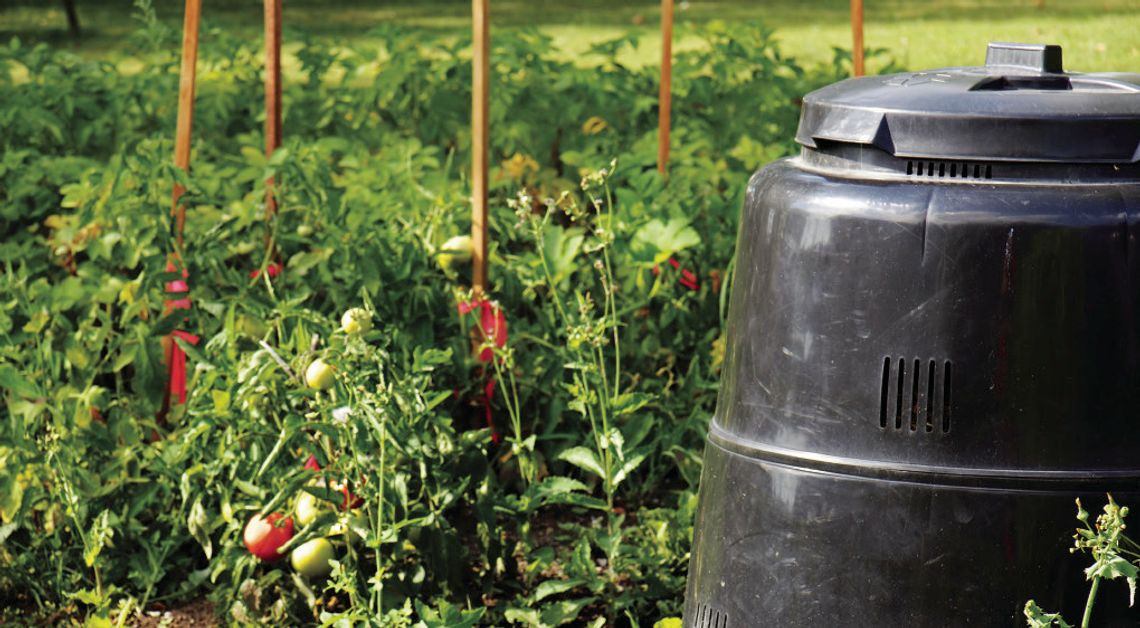What is Composting?
Composting is the managed, aerobic (oxygen-required) biological decomposition of organic materials by microorganisms. You can compost at home using food scraps from your kitchen and dry leaves and woody material from your yard. Successful composting requires a proper balance of the following materials:
• Carbon-rich materials (“browns”).
• Nitrogen-rich materials (“greens”).
• Water (moisture).
• Air (oxygen). The following provides guidance for materials that make for good composing.
Nitrogen-Rich Materials (“Greens”) • Fruit and vegetable scraps
• Grass clippings
• Coffee grounds and paper filters
• Paper tea bags (no staples)
• Eggshells (crushed) Carbon-Rich Materials (“Browns”)
• Dry leaves
• Plant stalks and twigs
• Shredded paper (non-glossy, uncolored) and shredded brown bags
• Shredded cardboard (no wax coating, tape, or glue)
• Untreated wood chips Avoid Adding materials from the following to a Backyard Compost Pile
• Meat, fish, and bones*†
• Cheese and dairy products*†
• Fats, oils, and grease*†
• Cooked food (small amounts are fine)*†
• Compostable foodservice ware and compostable bags†
• Herbicide-treated plants and grass, Aggressive weeds/ weeds with seeds, Diseased and pest-infested plants, Treated or painted wood, Pet waste and cat litter, Dryer lint, Glossy paper, Produce stickers *These foods can attract animals. Backyard composting piles generally do not reach high enough temperatures to fully decompose these materials.
This information comes from https://www.epa.gov/recycle/ composting-home.
How Do I Start a Home Compost Pile?
There are two options for composting at home. You can buy a commercial composting unit, or you can build your own backyard pile. This fall is a wonderful time to start a composting project. You likely have pruned and cleared your garden and want to clean up the waste. This waste decomposed over several months turns into “humus” compost. This material is great as a fertilizer for your garden or flowers.
Here are 10 easy steps for creating a compost heap (GardenBuildingDirect. co.uk).
1. Find a suitable sized container. Remove the bottom. Place this container in a relatively shady part of the garden. The right size depends on the volume of composable material that your family will generate.
2. Start filling the bottom with small branches and twigs to allow for aeration.
3. Balance the materials using equal parts of Greens and Browns.
4. Do NOT place large pieces of material in the bin. 5. The best materials, green or brown, include dried leaves, grass clippings, manure, fruit, vegetables, peelings, coffee grounds, tea leaves, old wine, used pet bedding, dry cat or dog food, dust, old herbs and spices, shredded newspaper, receipts, hair, wine corks, and toothpicks.
6. Do NOT use meat scraps, dairy products, or bread. These foods attract racoons and other pests.
7. Bury your new scraps under those already composting. 8. Aerate once a week using a shovel or rake to mix the materials.
9. Do NOT let the pile get too dry. Use water regularly to keep it moist. Covering the pile with a tarp will help it maintain water.
10. In a few months you should have compost that is ready to use. It is ready when it turns a dark brown, smells earthy, and is warm to the touch.
Of course, there are commercial composting units. They cost from $70 to $300. Amazon and other home suppliers have a wide range of these tumbler units. The advantage is that there is no need for set up and turning the pile. The units are free standing and can be moved. Most have a handle that allows for tumbling the composting materials. The more expensive version have timers to turn on electric motors to turn the compost as well as monitor compost temperatures.









